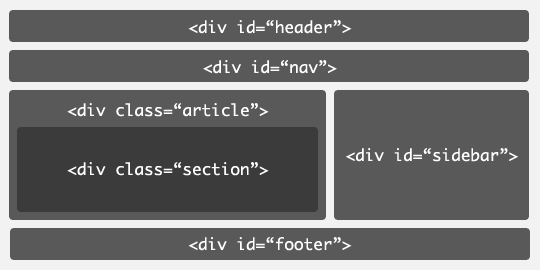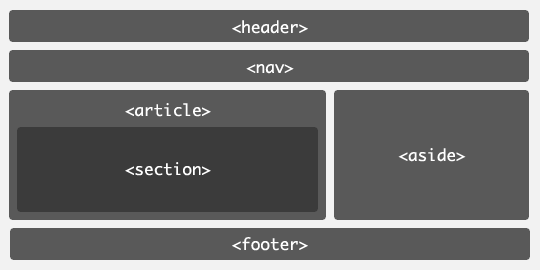Web Programming Step by Step
Lecture 26
The Future: HTML 5, CSS 3, ECMAScript 5
References: html5rocks.com, alistapart.com, w3schools, Dive Into HTML 5, W3C Draft HTML 5 Spec, Chrome Experiments
Except where otherwise noted, the contents of this presentation are Copyright 2010 Marty Stepp and Jessica Miller.
What is HTML 5?
-
a new W3C standard version of the HTML markup language

- successor to HTML 4.01 and XHTML 1.1
- balance between too-loose-ness of HTML 4 and too-strict-ness of XHTML
- reduces the browser's need for plugins to display content, e.g. multimedia
- make web content more rich, semantically meaningful, descriptive, accessible
- more easily enable the web as an application platform (Web 2.0)
What's new in HTML 5?
What's new, continued
-
semantic web / microdata attributes:
rel="...",itemscope,itemtype,itemprop

-
 accessibility features ("ARIA")
accessibility features ("ARIA")
- embedding of rich XML-like formats such as SVG vector graphics
- other stuff: offline apps, geolocation, cross-document messaging, MIME type registration, history management, ...
The old way

-
web pages often have to give semantic meaning to content through
classandidattributes, rather than through the tag elements themselves
HTML 5 semantically meaningful tags

HTML 4 / XHTML embedding a video
<object classid="CLSID:6BF52A52-394A-11d3-B153-00C04F79FAA6" id="player" width="340" height="280">
<param name="url" value="http://www.domain.com/path/to/winmovie.wmv" />
<param name="src" value="http://www.domain.com/path/to/winmovie.wmv" />
<param name="showcontrols" value="true" />
<param name="autostart" value="true" />
<!--[if !IE]>-->
<object type="video/x-ms-wmv" data="http://www.domain.com/path/to/winmovie.wmv" width="340" height="280">
<param name="src" value="http://www.domain.com/path/to/winmovie.wmv" />
<param name="controller" value="true" />
<param name="autostart" value="true" />
</object>
<!--<![endif]-->
</object>
- Yuck!
HTML 5 embedding a video
<video src="video.ogv" width="425" height="350"></video>
- yes, please
- it'll also be easy to manipulate (play/pause/stop/etc.) the video via the JS DOM
- one drawback: drama over codecs such as MPEG 4 / H.264, Ogg Theora / VP3, WebM, AVI
CSS 3 new features
-
new selectors:
nth-child,inline-block,:not,+ - ability to embed fonts in a page (yay)
-
easy built-in support for multi-column layouts

-
transparency/opacity, color gradients, shadows

-
rounded corners/borders

- animations and transitions (like Scriptaculous)
-
affine transformations (scaling, rotation, perspective)

JavaScript DOM new features
-
DOM selectors:
getElementsByClassName,querySelectorAll(like Prototype's$$) -
graphics 'context' object to draw on the HTML Canvas (like
Graphics gin Java) -
in-browser storage (
window.localStorage) and databases (window.openDatabase) - web workers (threads) and web sockets (2-way communication channels to server)
- drag-and-drop of elements (like Scriptaculous)
-
standardizes features that were already in browsers but were non-standard (e.g.
innerHTML)
JavaScript (ECMAScript) 5 features (1, 2)
- "strict mode" with more error checking to avoid bad constructs (JSLint)
- object properties with easy getter and setter methods (better than public fields)
-
library support for the JSON data format (
JSON.parse) - fixed for-each loop (yessssss)
-
objects:
getPrototypeOf,create,defineProperty,seal,freeze,keys -
arrays:
indexOf,lastIndexOf,every,some,map,filter,reduce -
strings:
trim,toJSON; better Unicode (internationalization) support - function binding (attaching a function to an object and calling it on that object)
Browser support (1, 2, 3, 4)
-
Chrome 6 / Safari 5: almost all features (except some of Forms 2.0)
-
for some CSS3 props, must use temporary names (e.g.
-webkit-border-radius)
-
for some CSS3 props, must use temporary names (e.g.
-
Firefox 4: supports many features (not most of Forms 2.0; not some video codecs; no local databases; no CSS animations)
-
for some CSS3 props, must use temporary names (
-moz-border-radius)
-
for some CSS3 props, must use temporary names (
- Opera 10: good; many features supported, almost as much as Chrome/FF
-
IE 9: pretty crappy. Some video support; pseudo-canvas through Explorercanvas library; embedding fonts; drag-and-drop
- ongoing drama with video tag / codecs
- HTML 5 Readiness, caniuse.com


 Forms 2.0: sliders, search bars, color/number/email/url/date/time, placeholders, ...
Forms 2.0: sliders, search bars, color/number/email/url/date/time, placeholders, ... 



